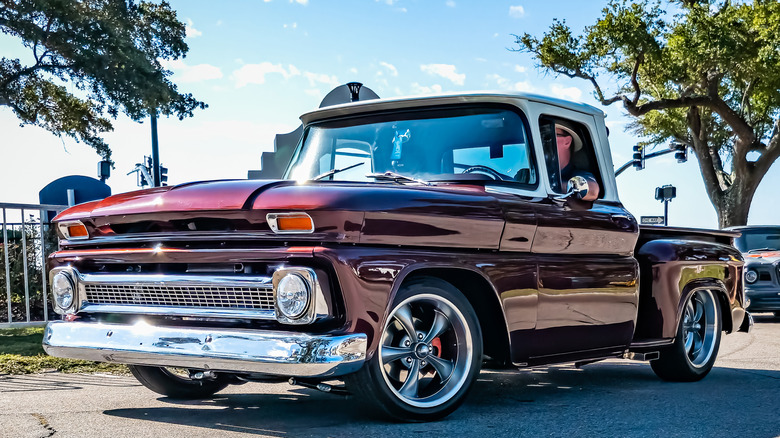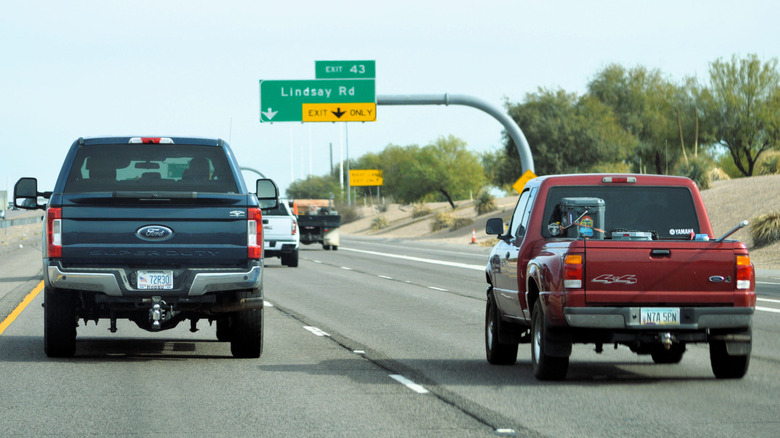What Is A Fleetside Truck Bed And How Is It Different From A Stepside?
Before the late 1950s, all pickup trucks would typically sport the same style of bed, which saw the wheel arches mounted on the outside of the bed. In order to fill the gap between the front of the rear wheel arch and the cab, a small piece of flat metal would be inserted, and thus a step created — hence the name, stepside. This step allowed owners to step-up and reach into the bed more easily, so in addition to being a stylish characteristic, it was functional too.
For years, automakers produced trucks with stepside beds, although everything changed in 1958 when Ford developed the fleetside design. Rather than fitting a bed between the inside of both wheel arches, Ford's new design saw the truck's bed sides sitting flush with the doors. This meant that the wheel arches were situated within the bed, and therefore the "step" was lost.
Other manufacturers rushed to create similar designs in order to offer buyers the same range of choice as Ford, which meant a variety of names suddenly appeared to describe the old design. Chevrolet opted for the term "step-side," while Dodge went with utiline, and Ford chose flareside. These variations of the name have long since lost their commercial relevancy, and now stepside is largely adopted by all to describe the old-school bed design.
Fleetside trucks beds are typically more practical than the older Stepside design
Some prefer the smooth and minimalist style of a fleetside bed, while others lean towards the traditional design of a stepside, but the truth of the matter is a fleetside is more practical, as it enables the bed to sport a larger overall capacity.
It's true that the space between the arches would still technically be just as compromised as that of a stepside truck, but more space was available both in-front and behind the arches, whereas stepside bed trucks are the same width throughout. It's also easier to mount items on top of the arches in a fleetside truck, as this area is still within the confines of the bed.
It's these extra practicalities and the versatility of a fleetside bed that captured the interests of consumers and automakers alike, which is why the straight-sided design ultimately became the new norm, while stepside beds became the lesser-spotted alternate.
Stepside beds are all but extinct, while the Fleetside style is still the industry norm
The stepside design is now all but extinct in terms of modern truck design, but it might surprise you to hear that it's not just classic Chevy trucks that sport the stepside design — both Ford and Chevrolet continued to push stepside trucks for quite some time, until 2009 and 2006, respectively. Dodge could apparently foretell the future clearer, and decided to drop the design altogether some decades prior.
Not only was the fleetside design much more practical, with more space behind and in front of the arches, in addition to on-top, but the swooping lines of stepside beds were beginning to look less natural when combined with modern, angular trucks from the '80s and beyond. While these meant that automakers began to move on from the stepside design, many enthusiasts still appreciate and in some cases prefer the older design, which is why some historic stepside models regularly command small fortunes when they do come up for sale in restored or great and original condition.


